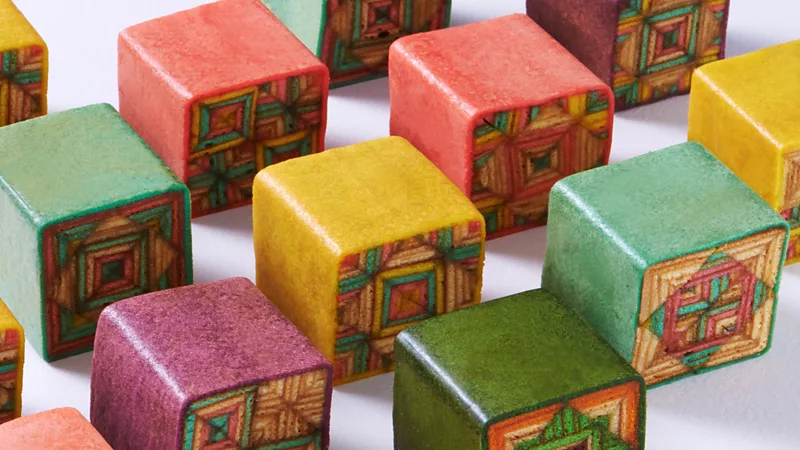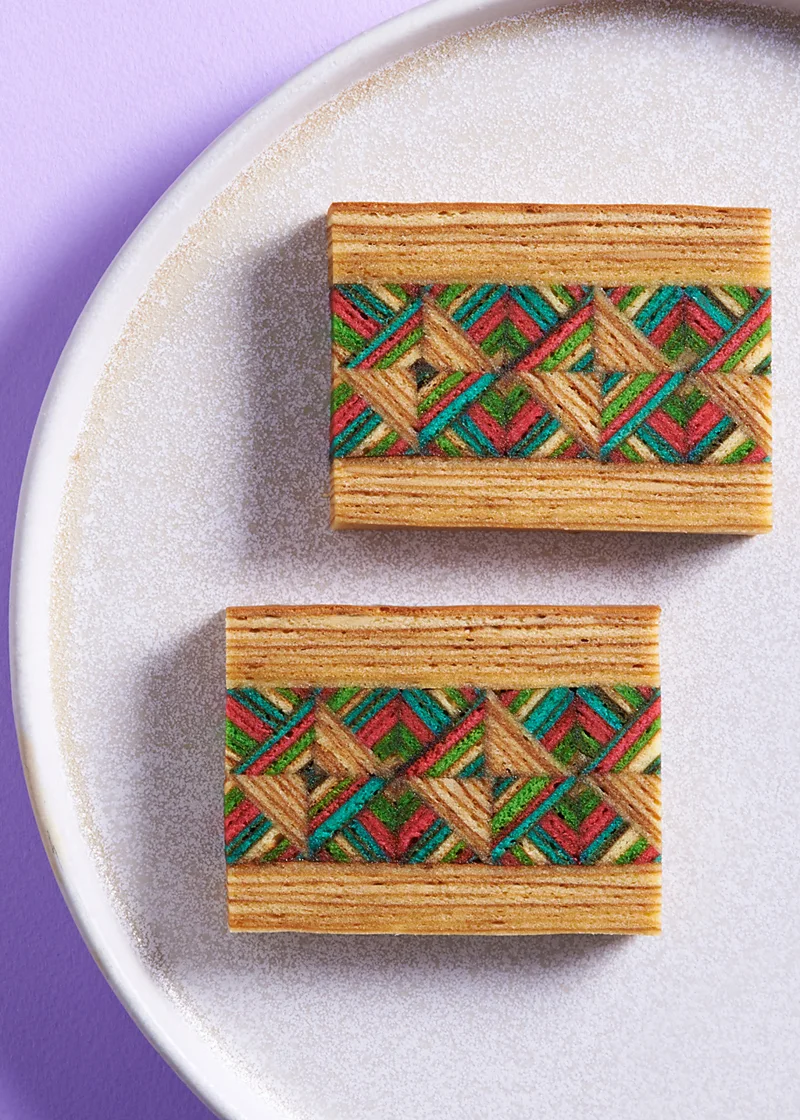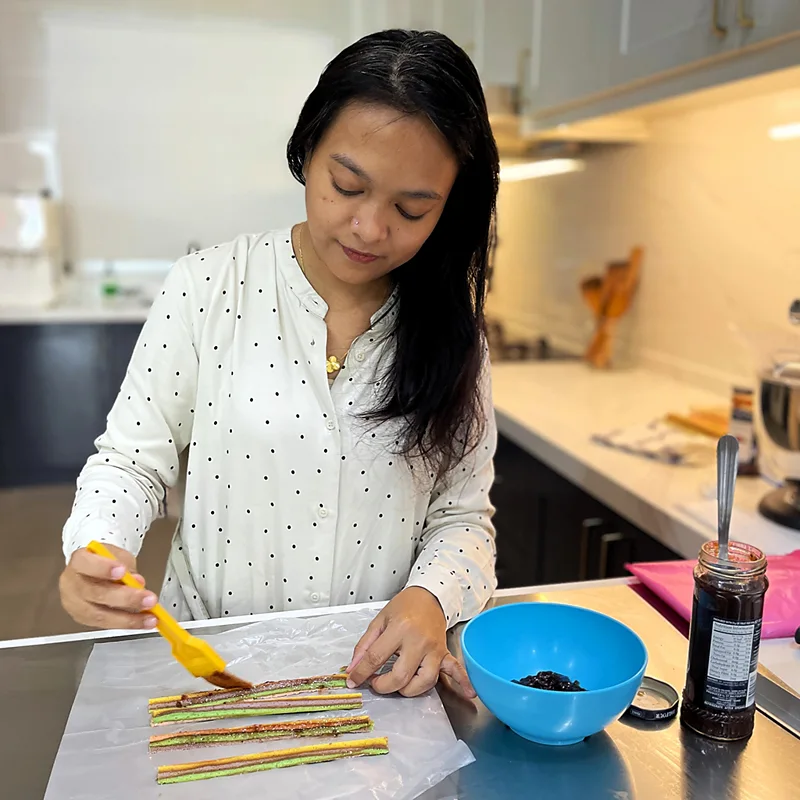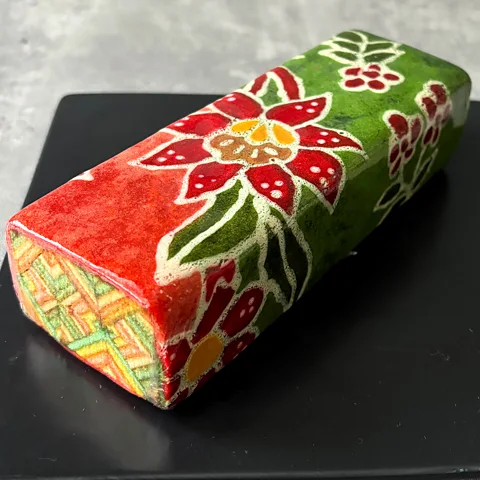The most beautiful cake for Ramadan
 The creation of a cake is an exquisite art, blending a myriad of colors and flavors to produce a delectable treat. Within its soft and delicious layers lies a mesmerizing array of intricate geometric designs, forming a kaleidoscope of visual delights.
The creation of a cake is an exquisite art, blending a myriad of colors and flavors to produce a delectable treat. Within its soft and delicious layers lies a mesmerizing array of intricate geometric designs, forming a kaleidoscope of visual delights.
As I step into Seri's cozy baking studio at her home near Kuala Lumpur, I'm immediately greeted by the rich, buttery scent of kek lapis, or layer cake. With Ramadan, known locally as Raya, approaching in Malaysia, it's no surprise that the air is filled with this enticing aroma, as kek lapis is an essential part of the festivities.
Seri, whose full name is Sharifah Zainon, brings her background as an engineer into her role as a baker. Observing her expertly spread the batter onto the pan, I can't help but liken the process of baking a kek lapis to conducting a scientific experiment. Creating this multi-layered Malaysian delicacy, with its vibrant and intricate patterns, demands not only knowledge and skill, but also a considerable amount of patience, precision, and a steady hand.
Having a background in the sciences proves beneficial for kek lapis bakers, as evidenced by the intricate designs crafted by Karen Chai, a former engineer turned baker, at her baking studio in a tranquil suburb of Kuala Lumpur. After completing her pastry arts studies at Le Cordon Bleu in Paris and returning to Malaysia, Chai decided to specialize in kek lapis, drawing inspiration from her mother's recipe. She emphasizes the significance of understanding the science behind baking in achieving success with kek lapis.
This layered cake made its way to Malaysia from neighboring Indonesia, specifically through the state of Sarawak on Borneo Island. Originating in the mid-19th century, Dutch colonizers introduced the European-style plain spit cake – created by layering dough onto a rotating spit – to the region then known as Batavia (now Jakarta). Indonesian locals infused the cake with indigenous spices like cinnamon, cloves, and nutmeg, transforming it into lapis legit, also known as the thousand-layer cake.
The Art and Science of Kek Lapis
 When Sarawakians introduced the kek lapis to Malaysia in the 1970s, they transformed it into an exquisite art form, characterized by its multiple layers, diverse colors, and flavors, resulting in a soft and delectable delicacy. Despite its seemingly simple exterior, cutting into a kek lapis reveals a mesmerizing display of intricate geometric patterns.
When Sarawakians introduced the kek lapis to Malaysia in the 1970s, they transformed it into an exquisite art form, characterized by its multiple layers, diverse colors, and flavors, resulting in a soft and delectable delicacy. Despite its seemingly simple exterior, cutting into a kek lapis reveals a mesmerizing display of intricate geometric patterns.
Also known as the Sarawak layer cake, kek lapis typically consists of at least 12 layers. Creating this cake involves meticulously adding thin layers of batter onto a baking pan at intervals, then broiling or grilling each layer to prevent burning. While the classic version features alternating light and dark strips of batter, colored versions boast elaborate geometric patterns, sometimes spanning over 20 layers.
After cooling, the cake is sliced into strips and meticulously reassembled using thick jam or condensed milk as adhesive. Often, multiple cakes are baked, and pieces from each are assembled to achieve complex patterns. These assembled layers may then be wrapped in a thin layer of cake of a single color or sandwiched between plain multi-layered cakes.
For bakers, the process is intricate and demanding. Even seasoned bakers begin by meticulously planning the patterns on paper before executing them with the batter. A single complex design can take up to eight hours to complete, with numerous opportunities for error throughout the assembly process.
Patience, Precision, and Perseverance
 Karen Chai explains the unique challenges of crafting kek lapis, where errors may only become apparent after assembly, leading to disappointment despite hours of meticulous work. She shares her mother's innovative 16-piece design, born out of a calculation mistake, showcasing the creativity that can emerge from such setbacks.
Karen Chai explains the unique challenges of crafting kek lapis, where errors may only become apparent after assembly, leading to disappointment despite hours of meticulous work. She shares her mother's innovative 16-piece design, born out of a calculation mistake, showcasing the creativity that can emerge from such setbacks.
Both Chai and Seri emphasize the rewarding feeling of achieving a flawlessly executed design, despite the lengthy and demanding baking process. With orders pouring in for Raya celebrations, the bakers are immersed in fulfilling requests received through social media platforms.
In their hometowns in Sarawak, kek lapis holds significance in various cultural celebrations, transcending religious and communal boundaries. Watching Seri meticulously piece together the cake strips with raspberry jam evokes the image of a complex puzzle slowly coming together—an activity she describes as therapeutic, enjoyable, and creatively fulfilling. Seri's longtime customer and devoted cake enthusiast, Farazaila Wahet, expresses her love for kek lapis, describing it as a versatile treat suitable for any occasion, though essential for Raya celebrations. Having relocated from Sarawak to Kuala Lumpur over a decade ago, Wahet finds the satisfaction of kek lapis unmatched, praising its dense texture and rich flavor.
Seri's longtime customer and devoted cake enthusiast, Farazaila Wahet, expresses her love for kek lapis, describing it as a versatile treat suitable for any occasion, though essential for Raya celebrations. Having relocated from Sarawak to Kuala Lumpur over a decade ago, Wahet finds the satisfaction of kek lapis unmatched, praising its dense texture and rich flavor.
Kek lapis comes in a variety of flavors, ranging from classic options like chocolate and vanilla to more unique choices such as strawberry, red velvet, and pandan. Some artisans, including Seri and Chai, are innovating this traditional cake to appeal to younger generations while preserving its authenticity. Seri, for example, adds a modern twist by incorporating chocolate batik art on the top layer, blending Malaysian tradition with kek lapis to create a fresh and appealing variation.
Chai continuously explores intricate patterns and innovative flavor combinations in her kek lapis creations. Past experiments include gluten-free variations using coconut flour topped with peanut butter, as well as unique combinations featuring fig, apricot, and cinnamon.
Crafting a high-quality kek lapis demands significant time and premium ingredients, resulting in higher costs, sometimes reaching up to RM300 (approximately £50) or more for a one-kilogram square cake. Despite the expense, the demand for this traditional delicacy remains high among individual customers, as well as for corporate gifts and wedding favors, providing steady business for small-batch bakers.
Driven by a commitment to preserve Sarawak's culinary heritage, these bakers persist in their craft despite the challenges of long hours and slim profit margins. For Seri and others like her, baking kek lapis is not just a job but a meaningful connection to their roots, embodying a sense of home with every cake they create.
























